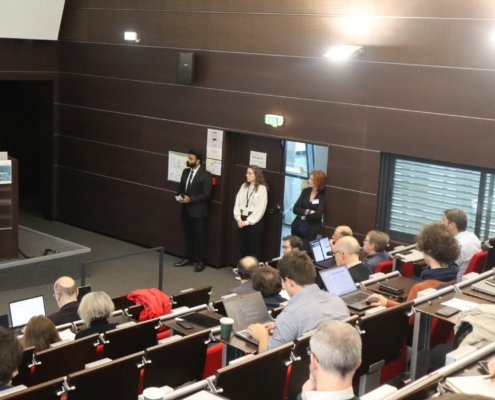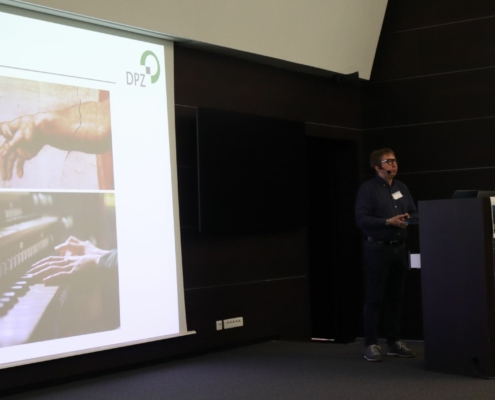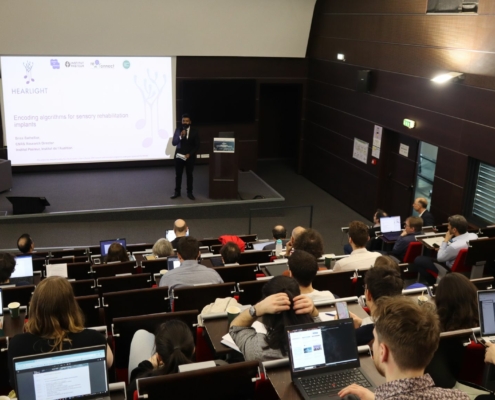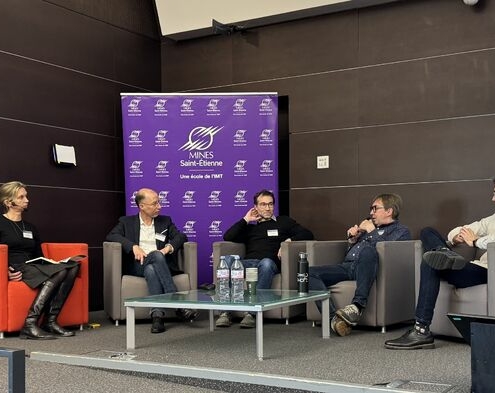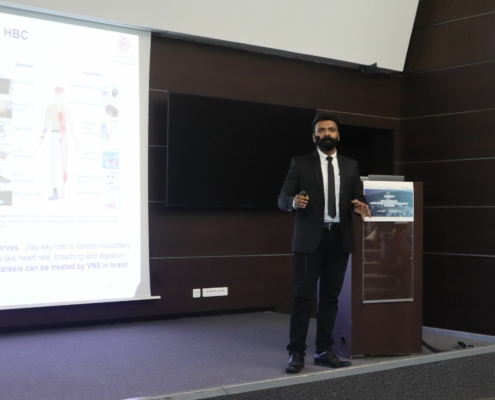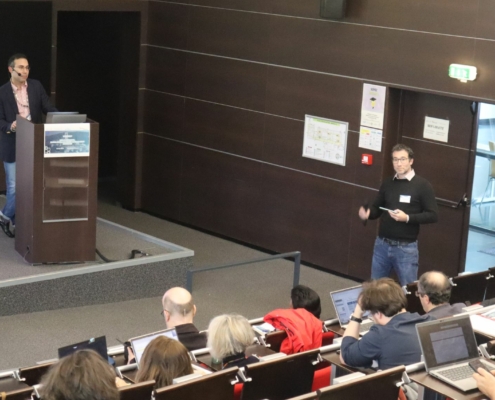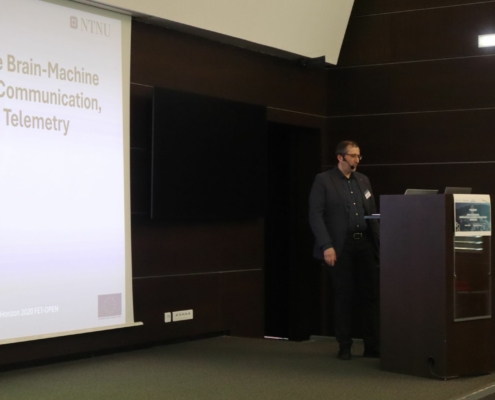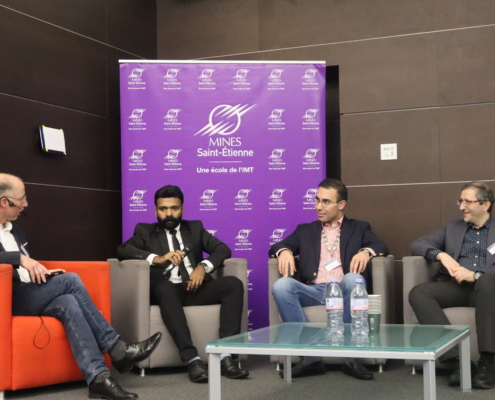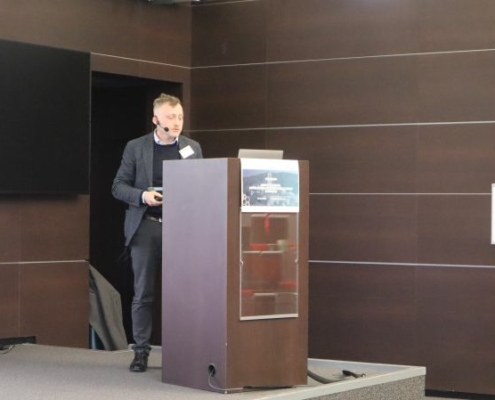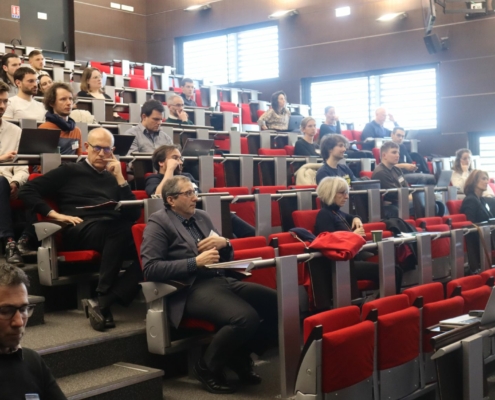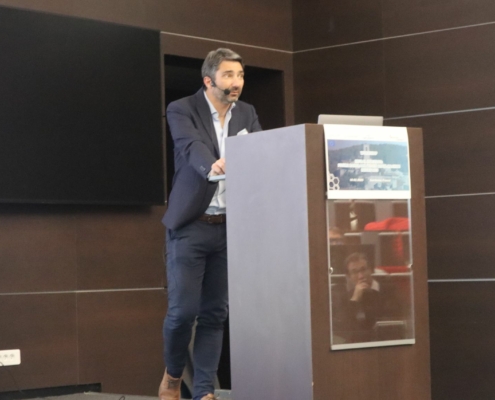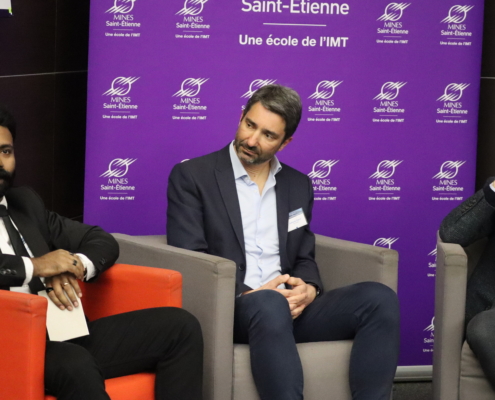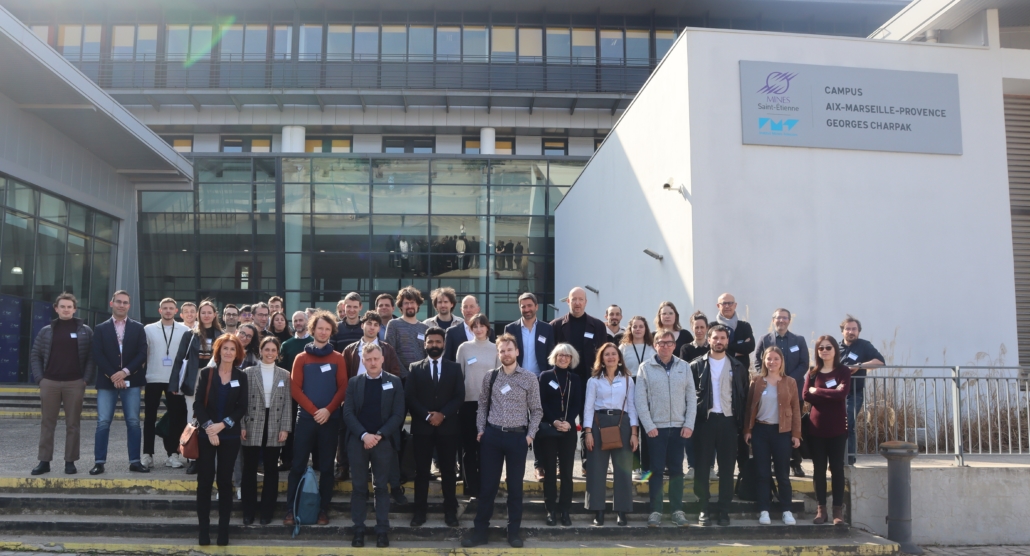
Held in Gardanne, France, our last Joint Workshop Neural Horizons: Future Panorama within Brain-Machine Interfaces brought together leading experts from across Europe to share the latest breakthroughs in Brain-Machine Interfaces (BMIs). The event, a collaboration between B-CRATOS, Hearlight and NEMO-BMI, offered a comprehensive exploration of innovations in implants, neural communication, and machine-human interaction.
Below, we present a session-by-session recap of the workshop’s highlights and the key contributions from its distinguished speakers.
Session 1: Innovation within Brain Implants – Pioneering BMIs
- Brice Bathellier (Institut Pasteur, HearLight project) opened the workshop by emphasizing that delivering high-throughput information to the brain is not just about high-density stimulation, but also about encoding signals in ways the brain can interpret. He discussed the challenges and opportunities in developing such encoding algorithms.
- Hans Scherberger (German Primate Center, DPZ; B-CRATOS) explored the complexity of hand function, which relies on intricate computations across multiple brain regions. His team’s recent work enables the decoding of hand actions from neuronal signals in non-human primates, paving the way for advanced neural prosthesis control.
- Fabien Sauter-Starace (CEA DTIS, NEMO-BMI project) presented the WIMAGINE® implant, a wireless ECoG device featuring CEA’s custom-designed chip. Long-term clinical data from two trials confirmed its stability and robust performance, marking a significant step forward for chronic neural implants.
- Paul Le Floch (CEO, Axoft) introduced ultrasoft probes for chronic, high-resolution brain recordings. Utilizing novel soft polymer materials, these probes minimize tissue damage and offer long-term stability, outperforming existing commercial alternatives and opening new avenues for clinical neural interfaces.
- Paul Wanda (Blackrock Microsystems Europe, B-CRATOS) addressed the current limitations of BCI systems in real-world scenarios. He highlighted the need for advanced wireless technologies-such as those developed in B-CRATOS-to improve data rates and power efficiency, moving toward safer, fully implantable BCIs.
Panel Discussion
The session concluded with a dynamic panel discussion, emphasizing the importance of multidisciplinary collaboration in overcoming the challenges of next-generation BMIs.
Session 2: Mind Meets Machine: evolutions within communication
- Robin Augustine (Uppsala University, B-CRATOS) introduced Fat-Intra Body Communication (Fat-IBC), a paradigm shift that uses adipose tissue as a natural waveguide for microwave signals. This approach offers higher bandwidth and improved power management, with transformative potential for advanced prosthetics and high-data-rate BMI applications.
- Charles Rezaei-Mazinani (Ecole des Mines, HearLight project) highlighted innovations in flexible bioelectronic implants for neural recording and stimulation. The team’s multi-gold layer thin-film arrays with PEDOTSS electrodes and parylene C insulation reduce capacitive coupling and maintain device thinness, demonstrating excellent in vivo performance.
- Ali Khaleghi (NTNU, B-CRATOS) presented a battery-free BMI using RF backscatter communication for high-speed data transmission (32 Mbps) with minimal power consumption. Wireless power is delivered via near-field magnetic induction, and NFC telemetry enables secure, real-time monitoring-advancing the field of durable, efficient neuroprosthetics.
Panel Discussion
This panel explored how these communication breakthroughs are enabling more integrated and less invasive BMI systems.
Session 3: Prospects for Machine-Human Interaction
- Marco Controzzi (Scuola Superiore Sant’Anna, B-CRATOS) discussed the future of hand prostheses, focusing on replicating the sensory and motor complexity of the human hand. His research integrates robotics and human manipulation strategies to create more dexterous prosthetics and intuitive interfaces.
- Guillaume Charvet (CEA DTIS, NEMO-BMI & Reverse-Paralysis projects) shared updates from clinical trials of the WIMAGINE® implant, tested over seven years in collaboration with CHUGA and EPFL/UNIL/CHUV. The implant enables control of complex effectors like exoskeletons, with ongoing work on miniaturization and improved decoding algorithms for home use.
- Henri Lorach (EPFL, NEMO-BMI & Reverse-Paralysis projects) presented a brain-controlled digital bridge to restore voluntary movement after paralysis. The Brain-Spine Interface (BSI) records cortical signals and translates them into spinal cord stimulation, bypassing injuries and restoring movement-offering hope for neurological recovery.
Panel Discussion
The final panel reflected on the journey from laboratory innovation to real-world clinical application, highlighting the transformative potential of BMIs for patients.
Key Takeaways
The B-CRATOS Joint Workshop showcased the vibrant progress and collaborative spirit of Europe’s BMI research community. Innovations in materials, wireless communication, and machine-human interfaces are rapidly transitioning from proof-of-concept to clinical reality. The event underscored the critical importance of multidisciplinary collaboration in overcoming technical and translational challenges-bringing hope for life-changing applications for individuals with neurological conditions.
For more information, you can see all the presentations of the speakers here.
Many thanks to the Ecole des Mines de Saint-Etienne for hosting the workshop and for helping with the organisation.

